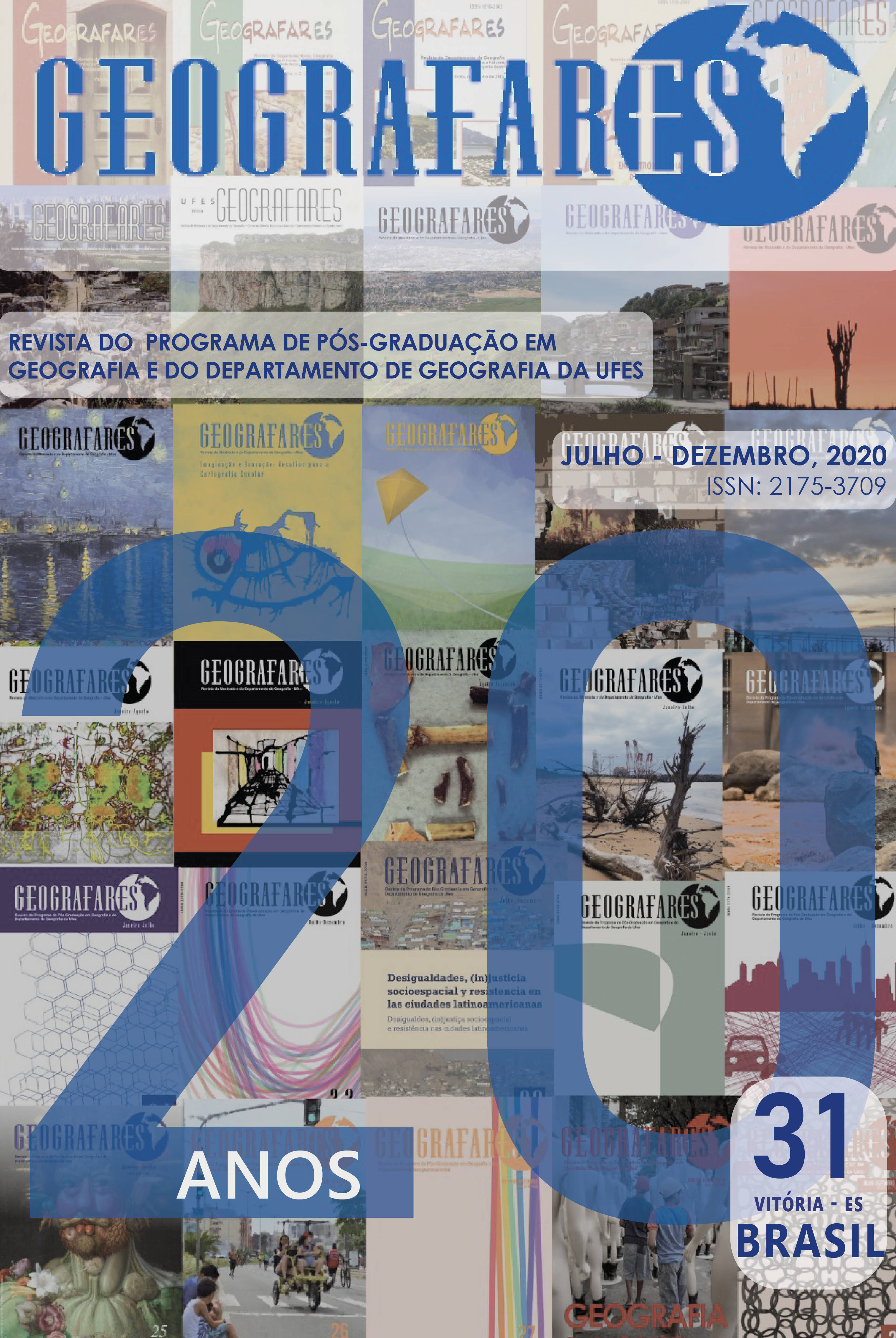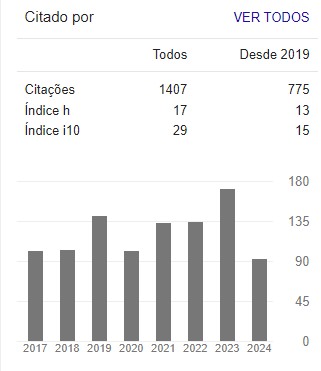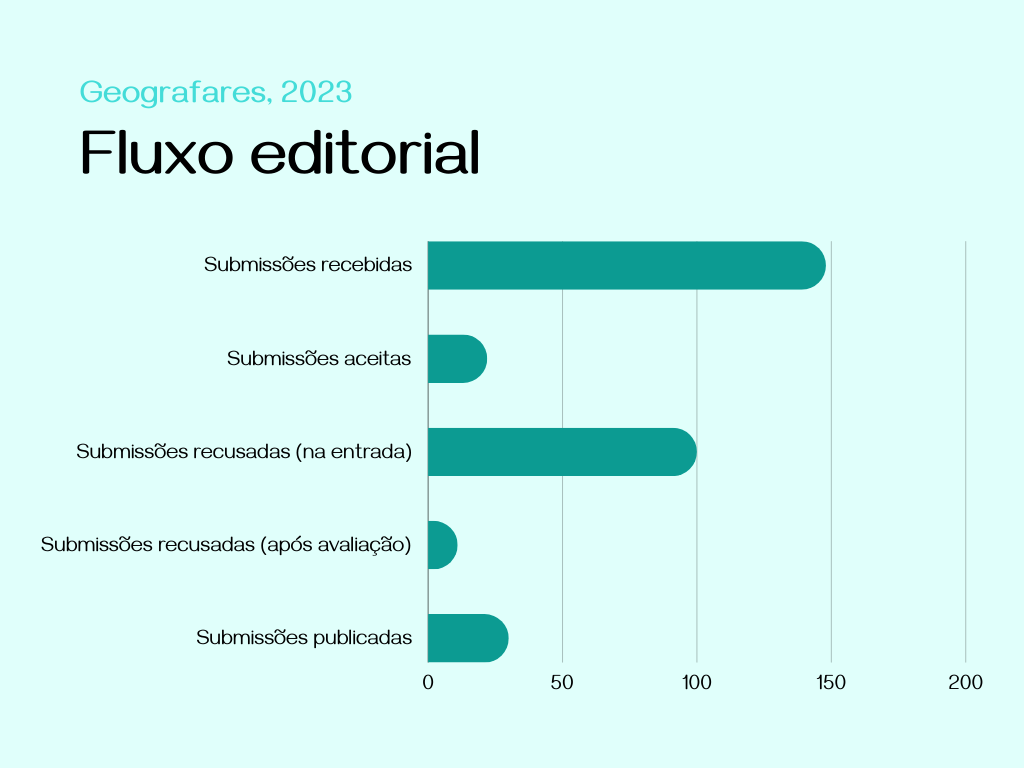Socio -Territorial Transformations of the Northeast Region of Uruguay (2000-2018)
DOI:
https://doi.org/10.7147/geo.v1i31.31087Keywords:
Territory, Agribusiness,, Family producerAbstract
This article aims to understand how socio-territorial transformations have been manifesting in the northeast region of Uruguay between 2000 and 2018. In this period, the territorial expansion of agribusiness through soy monoculture and forestry intensifies, which causes important changes in the productive, social, and landscape base. The objective is, on one hand, to describe quantitatively and in terms of changes in land use, the recent transformations in the agrarian territories of the region and, on the other hand, to understand the impacts of these processes on some social dynamics, especially in the migration of family producers and their families from the agrarian space to the urban one. The methodology included a bibliographic and documentary review, the analysis of statistical data from the General Agricultural Census, and the analysis of land use through satellite images. The results show that monocultures linked to agribusiness have modified the agrarian structure and the use of the territory resulting in increasing pressure on the price of land, which puts the permanence of family producers at risk
Downloads
References
CARÁMBULA, M. De la identidad de la resistencia a la identidad proyecto: la Producción Familiar en Cane¬lones y los Territorios de la Soberanía. Pos-doctorado del Centro de Estudios Avanzados, Universidad Nacional de Córdoba, Argentina. 2016.
CARTER, M. Democracia, sociedad civil y participación popular en América Latina. MIRIADA: Investigación en ciencias sociales. N°6. Argentina. 2010.
CORREA, Roberto Lobato. Sobre agentes sociais, escala e produção do espaço: um texto para discussão. In: CARLOS, Ana Fani; SOUZA, Marcelo Lopes; SPOSITO, Maria Encarnação. A produção do espaço urbano – agentes e processos, escalas e desafios. São Paulo: Contexto, 2011. pp.41-52.
DIEA. Censo General Agropecuário. Montevideo. Uruguay. 2011.
_____. Censo General Agropecuário. Montevideo. Uruguay 2000.
_____.Anuário 2019. Disponível em <https://descargas.mgap.gub.uy/DIEA/Anuarios/Anuario2019/Anuario2019.pdf>. Acesso em: 10 maio 2019
Dirección General de Desarrollo Rural (DGDR – MGAP, 2014). Registro de Productores Familiares (2014).
Dirección General de Desarrollo Rural (DGDR – MGAP, 2016). Definición Productor Familiar Agropecuario y/o Pesquero. Resolución Nº 1013/2016
DOMÍNGUEZ, A. La territorialización del capital y la monopolización del territorio pampa En: Olhares sobre o pampa: um território em disputa / organizadoras Carmen Rejane Flores Wizniewsky, Eliane Maria Foleto. – Porto Alegre: Evangraf. p. 90-100. 2017.
DOMINGUEZ, A; ACHKAR, M; PESCE, F; DÍAZ, I. Las Transformaciones territoriales del espacio agrario Uruguayo: nuevas regionalidades. Geo UERJ, Rio de Janeiro, n. 32, p.1-23, 2018.
FAO. Food and Agriculture Organization. Agricultura Familiar en America Latina y el Caribe. Recomendaciones de Políticas. Ed. Salcedo, S. y Guzmàn, L. Chile. 486 p. 2014.
FIGARI, M., ROSSI, V. GONZÁLEZ, R. Los productores familiares. Chiappe MC. El campo uruguayo: Una mirada desde la sociología rural. Montevideo: Facultad de Agronomía, 83-102. 2008.
FLORIT, P. ¿Subalternidad o antagonismo? Análisis de la resistencia de la producción familiar organizada a la concentración y extranjerización de la tierra en Uruguay. 2013. Páginas 12-30.Tesis de maestría, Universidad de la Republica, Uruguay.
GRAS, C. Y HERNÁNDEZ, V. El Agro como negocio. Producción, sociedad y territorios en la globalización. Buenos Aires: Biblos. 2013.
GRIFFIN, E. Agricultural land use in Uruguay. Thesis for the Ph.D. Michigan State University. s/p. 1972.
INE. Instituto Nacional de Estadística. Censos año 1996 y 2011. Montevideo. 2011.
LIGRONE, ATILIO Y CARLOS MANTERO. “Desempeño del sector forestal en el año 2009”, Anuario 2009, p. 233-241.
MENDES, E. de P. P; PESSÔA, V. L. S. Técnicas de investigação e estudos agrários: entrevistas, registros de observações e aplicação de roteiros de entrevistas. In: RAMIRES, J. C. de L; PESSÔA, V. L. S. (Org.) Geografia e pesquisa qualitativa: nas trilhas da investigação. Uberlândia: Assis, 2009. p. 509 – 537.
OYHANTCABAL G, NARBONDO I. Radiografía del Agronegocio sojero. Ed. REDES-AT, Montevideo, Marzo 2011.
PENGUE, W. Dinámicas y perspectivas de la agricultura actual en Latinoamérica: Bolivia, Argentina, Paraguay y Brasil. Ed. Böll. Santiago de Chile. 212 p. 2015.
PIÑEIRO, D. Concentración y extranjerización de la tierra en el Uruguay”. En: Las agriculturas familiares del MER¬COSUR, Trayectorias, Amenazas y desafíos. CICCUS. Argentina. 2010.
_____.Caracterización de la producción familiar Uruguaya. 2005. Disponible em: . Acesso em: 12 de abril de 2017.
PNUD. Rapport sur le développement humain. 2014 Disponible em: <http://hdr.undp.org/sites/default/files/hdr14-report-fr.pdf>. Acesso em: 05 de junho de 2017.
PRADOS, M.J., CAMARILLO, J.M., DOCTOR, A. YGARCÍARICA, F.J. Metodología para la identificación y el análisis de procesos de intensificación agraria mediante la utilización de sistemas de información geográfica e imágenes de satélite. Casopráctico en la cuenca del Guadiamar (proyectoSITCOVER). En: X Congreso de Métodos Cuantitativos, Sistemas de Información Geográfica y Teledetección. Valladolid. Universidad de Valladolid Asociación de Geógrafos Españoles. p. 8-24. 2002.
Programas Regionales de Enseñanza Terciaria (PRET 2007). 2008-2010 y su proyección al 2020. Serie: Documentos de trabajo CCI N° 1. Noviembre de 2008. Universidad de la República.
RODRÍGUEZ MIRANDA, A. Desarrollo económico y disparidades territoriales en Uruguay, EL FUTURO EN FOCO. Cuadernos sobre Desarrollo Humano, Nº 03, p. 33-52. 2014.
ROSSI, V. La producción familiar en la cuestión agraria uruguaya. Revista NERA, ano 13. número 16, p. 63-80. 2010.
SABOURIN, E. SAMPER, M. LE COQ, J. F. MASSARDIER, G. SOTOMAYOR, O. Y MARZIN, J. Análisis transversal de las políticas sobre agricultura familiar en América Latina. En Políticas públicas y agriculturas familiares en América Latina y el Caribe. Balance, desafíos y perspectivas. Ed. Eric Sabourin, Mario Samper y Octavio Sotomayor. Naciones Unidas, Santiago de Chile. p. 19-44. 2014.
SILVA, J. A modernização dolorosa. Río de Janeiro, Brasil, Zahar Editora. 1982.
TORRES ÁLVAREZ, M. F. D., ARBELETCHE, P., SABOURIN, E., CARDELLIAC GULA, J., & MASSARDIER, G. La agricultura familiar entre proyectos nacionales de desarrollo. EUTOPÍA N° 6, p. 25-40. 2014.
URUGUAY-PNUD. Desarrollo Humano en Uruguay (2008). Política, políticas y desarrollo humano. 2008.
ZERBINO, P. Crisis en el agro: hay 8 mil productores familiares menos que hace 16 años. Asociación Rural del Uruguay (ARU). 2017. Disponible em<https://www.elobservador.com.uy/nota/crisis-en-el-agro-hay-8-mil-productores-familiares-menos-que-hace-16-anos-20171219500>. Acceso en: 5 diciembre de 2017.
Downloads
Published
How to Cite
Issue
Section
License
Copyrights Declaration
Authors who publish in the journal agree with the following terms:
- Authors will keep their copyrights and grant the journal the right to their first publishing, simultaneously licenced under Creative Commons Attribution License which allows sharing their work with authorship recognition and initial release through this journal.
- Authors may sign additional contracts separately diffusing a non-exclusively version of the paper published in this journal (i.g. publishing in institutional repository or as a book chapter), once citing the authorship and initial release through this journal.
- Authors are encouraged to publicize and diffuse their paper online, for example onto institutional repositories or on their personal websites.



























